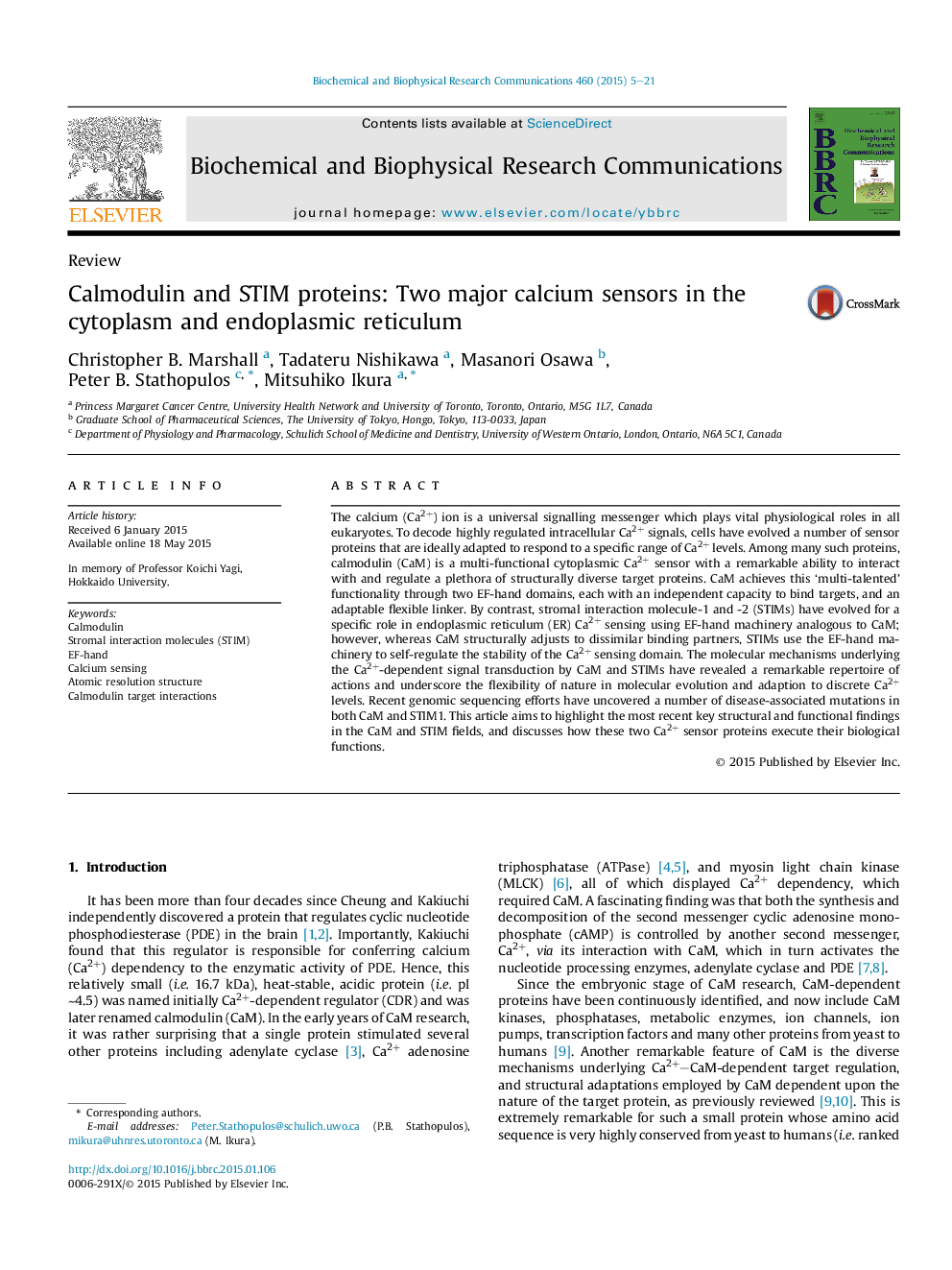| کد مقاله | کد نشریه | سال انتشار | مقاله انگلیسی | نسخه تمام متن |
|---|---|---|---|---|
| 1928201 | 1050323 | 2015 | 17 صفحه PDF | دانلود رایگان |

• CaM senses Ca2+ levels using two EF-hand domains and binds diverse targets.
• CaM mutations cause cardiac arrhythmias.
• STIMs sense ER Ca2+ levels with EF-hand machinery analogous to CaM.
• The EF-hand:SAM intramolecular interaction self-regulates STIM oligomerization.
• Familial STIM mutations cause immunodeficiency disease and Stormorken syndrome.
The calcium (Ca2+) ion is a universal signalling messenger which plays vital physiological roles in all eukaryotes. To decode highly regulated intracellular Ca2+ signals, cells have evolved a number of sensor proteins that are ideally adapted to respond to a specific range of Ca2+ levels. Among many such proteins, calmodulin (CaM) is a multi-functional cytoplasmic Ca2+ sensor with a remarkable ability to interact with and regulate a plethora of structurally diverse target proteins. CaM achieves this ‘multi-talented’ functionality through two EF-hand domains, each with an independent capacity to bind targets, and an adaptable flexible linker. By contrast, stromal interaction molecule-1 and -2 (STIMs) have evolved for a specific role in endoplasmic reticulum (ER) Ca2+ sensing using EF-hand machinery analogous to CaM; however, whereas CaM structurally adjusts to dissimilar binding partners, STIMs use the EF-hand machinery to self-regulate the stability of the Ca2+ sensing domain. The molecular mechanisms underlying the Ca2+-dependent signal transduction by CaM and STIMs have revealed a remarkable repertoire of actions and underscore the flexibility of nature in molecular evolution and adaption to discrete Ca2+ levels. Recent genomic sequencing efforts have uncovered a number of disease-associated mutations in both CaM and STIM1. This article aims to highlight the most recent key structural and functional findings in the CaM and STIM fields, and discusses how these two Ca2+ sensor proteins execute their biological functions.
Journal: Biochemical and Biophysical Research Communications - Volume 460, Issue 1, 24 April 2015, Pages 5–21